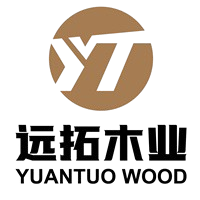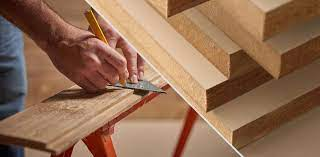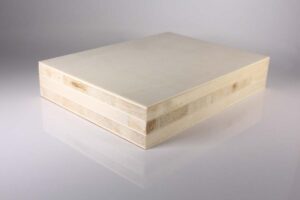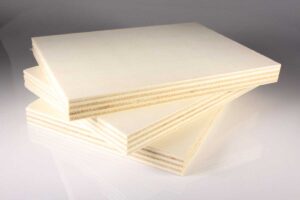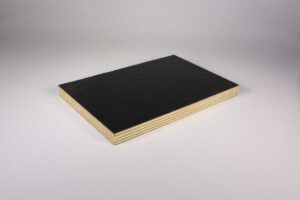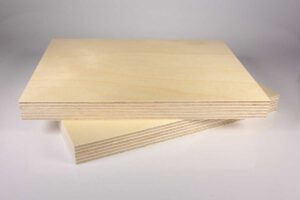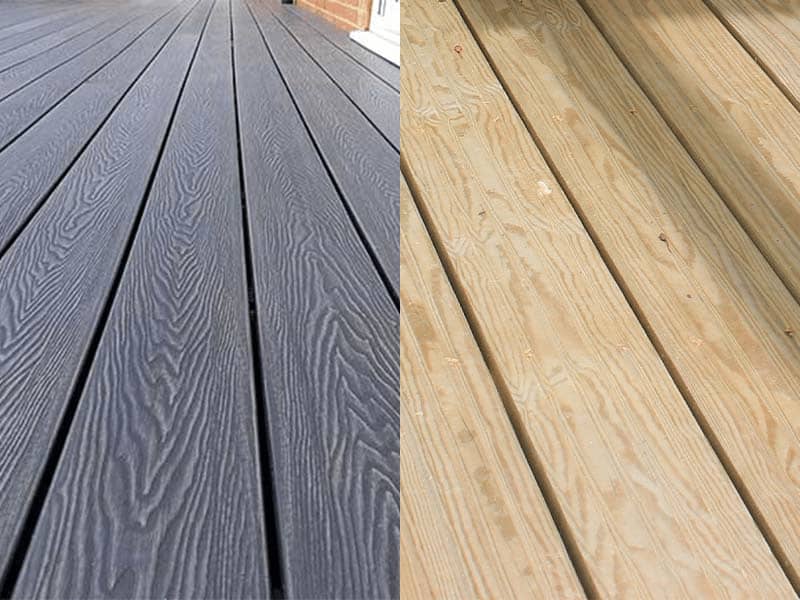The world of construction is on the brink of a seismic shift, and at its heart lies a material that’s as innovative as it is sustainable: engineered wood. This isn’t just about replacing traditional lumber; it’s about embracing a new era of building where strength, sustainability, and design freedom converge. Engineered wood products are rewriting the rules, offering architects, builders, and even DIY enthusiasts a chance to create stronger, greener, and more inspiring structures.
But what exactly makes engineered wood so special? It’s the marriage of nature’s resilience with human ingenuity. By taking wood fibers, veneers, and strands and reassembling them with powerful adhesives, we create materials that often outperform solid lumber in key areas. This guide dives deep into the world of engineered wood, revealing its hidden strengths and showcasing how it’s reshaping the very foundations of our built environment.
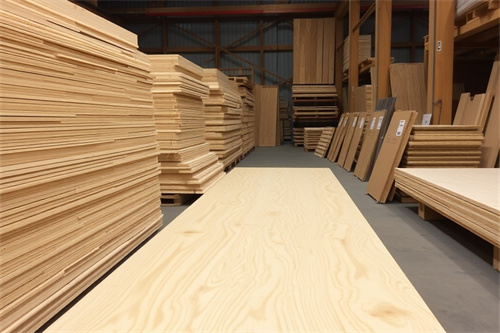
Engineered Wood: A Symphony of Strength and Sustainability
Imagine a material that combines the warmth and beauty of natural wood with the predictability and strength of steel. That’s the magic of engineered wood. It’s not about replacing wood’s inherent appeal; it’s about enhancing it through a meticulous engineering process.
Here’s how it works: thin layers of wood veneer, strands, or fibers are bonded together with strong adhesives, often in alternating grain directions. This cross-graining technique is crucial, as it minimizes wood’s natural tendency to warp, twist, or shrink in response to changes in humidity. The result is a composite material that’s not only stronger than the sum of its parts but also more stable and predictable over time.
Let’s break down the core advantages:
- Exceptional Strength and Stability: Engineered wood products are renowned for their impressive strength-to-weight ratio, often exceeding that of traditional lumber. This makes them ideal for load-bearing applications where structural integrity is paramount, ensuring buildings stand strong for generations to come.
- Dimensional Stability: One of the biggest challenges with solid lumber is its tendency to move with changes in moisture. Engineered wood, on the other hand, is designed for dimensional stability. This means less expansion and contraction, resulting in flatter walls, smoother floors, and a reduced likelihood of structural issues over time.
- Design Versatility: Architects and designers are embracing engineered wood for its incredible versatility. Available in a wide array of sizes, shapes, and finishes, it allows for greater design freedom, whether it’s achieving long, clear spans for open floor plans or incorporating curved beams for dramatic architectural accents.
- Sustainability at its Core: In an era where environmental responsibility is paramount, engineered wood shines. By utilizing wood fibers from fast-growing, sustainably managed forests, it minimizes environmental impact. Many engineered wood products even utilize wood waste that would otherwise end up in landfills, further reducing their ecological footprint.
7 Ways Engineered Wood is Transforming the Construction Landscape
- Stronger, Lighter, More Efficient Framing: Traditional framing methods often rely on heavy, solid lumber. Engineered wood studs and joists offer a compelling alternative. Their consistent dimensions, lighter weight, and exceptional strength allow for faster installation, reduced labor costs, and greater design flexibility, making them a favorite for both residential and commercial projects.
- Spanning the Gaps with Confidence: Creating open floor plans or large, unobstructed spaces often requires spanning significant distances. Engineered wood beams and headers, such as laminated veneer lumber (LVL) and parallel strand lumber (PSL), excel in these applications. Their exceptional strength over long spans allows for wider rooms, fewer support columns, and more dramatic architectural designs.
- Creating Stunning, Durable Floors: Engineered wood flooring has taken the flooring industry by storm, offering a compelling combination of beauty, durability, and ease of installation. Unlike solid hardwood, which can be prone to warping or cupping in humid environments, engineered wood flooring features a thin veneer of hardwood atop a core of plywood or high-density fiberboard. This construction provides the sought-after look and feel of solid hardwood with enhanced stability and moisture resistance.
- Building Greener, More Sustainable Structures: As the construction industry seeks to reduce its environmental impact, engineered wood products are emerging as a key solution. Their use of sustainably sourced wood fibers, efficient manufacturing processes, and potential for carbon sequestration align perfectly with the growing demand for greener building practices.
- Pushing the Boundaries of Design: Engineered wood empowers architects to think beyond traditional design constraints. From curved walls and arched doorways to cantilevered balconies and dramatic rooflines, its strength and versatility open up a world of possibilities for creating unique and inspiring structures that were once difficult or impossible to achieve with conventional materials.
- Enhancing Construction Efficiency: Time is money on a construction site, and engineered wood can contribute to significant time savings. Its consistent dimensions, lighter weight, and ease of installation can streamline construction processes, leading to faster build times, reduced labor costs, and a more efficient use of resources.
- Meeting the Demands of a Growing World: As the global population continues to grow, so too does the demand for housing and infrastructure. Engineered wood products offer a viable and responsible path forward, providing high-performance building materials that minimize environmental impact while meeting the needs of a rapidly urbanizing world.
Exploring the Engineered Wood Family
The world of engineered wood is vast and diverse, encompassing a range of products, each with its own unique characteristics and applications:
| Product | Description | Applications | Advantages |
|---|---|---|---|
| Plywood | Layers of wood veneer glued together with alternating grain directions for strength and stability. | Sheathing, subfloors, roofing, furniture, marine applications | Affordable, versatile, readily available, excellent strength-to-weight ratio |
| Oriented Strand Board (OSB) | Wood strands bonded together with resin under heat and pressure. | Sheathing, roofing, subfloors, packaging, temporary structures | Cost-effective, consistent quality, moisture-resistant, readily available |
| Laminated Veneer Lumber (LVL) | Thin sheets of wood veneer glued together in parallel layers. | Beams, headers, rim boards, flanges for I-joists, long-span applications | Exceptionally strong, dimensionally stable, resists warping and twisting, available in long lengths |
| Parallel Strand Lumber (PSL) | Long, narrow strands of wood bonded together with adhesive. | Beams, headers, columns, posts, applications requiring high strength and dimensional stability | Strongest engineered wood product, excellent load-carrying capacity, resists shrinking and swelling |
| Glued Laminated Timber (Glulam) | Solid lumber pieces glued together to form larger structural members. | Beams, arches, trusses, long-span structures, architectural applications | High strength, aesthetically pleasing, can be manufactured in custom shapes and sizes, fire-resistant properties |
Related articles:
- Plywood vs MDF: Unveiling the Top Contender for Your Design
- FSC Certified LVL: Unleashing 7 Benefits for Sustainable Building
Delving Deeper: Spotlight on LVL and Plywood
Laminated Veneer Lumber (LVL): The Backbone of Modern Construction
Imagine holding a piece of lumber that’s as straight as an arrow, incredibly strong, and resistant to warping or twisting. That’s the beauty of LVL. It’s created by taking thin sheets of wood veneer and gluing them together in parallel layers, resulting in a product that’s significantly stronger and more dimensionally stable than traditional lumber.
- Ideal Applications: LVL is the go-to choice for beams, headers, rim boards, and flanges for I-joists. It’s often used in applications requiring long, clear spans, such as supporting roof systems, floors, and openings for doors and windows.
- Advantages: LVL’s exceptional strength, dimensional stability, and resistance to warping and twisting make it a reliable choice for demanding structural applications. It’s also available in long lengths, reducing the need for joints and simplifying installation.
Plywood: The Versatile Workhorse of Building Materials
Plywood is the unsung hero of countless construction projects, offering a balance of affordability, versatility, and strength. It’s created by gluing together layers of wood veneer with alternating grain directions, which enhances its strength and stability.
- Ideal Applications: Plywood is incredibly versatile, finding applications in sheathing, subfloors, roofing, furniture construction, and even marine applications.
- Advantages: Plywood’s affordability, wide availability, and excellent strength-to-weight ratio make it a popular choice for a variety of construction needs. It’s also easy to work with, can be cut and shaped to fit various designs, and accepts paints and finishes well.
Making the Right Choice: Engineered Wood vs. Solid Lumber
While engineered wood offers a compelling array of advantages, choosing the right material for your project ultimately depends on your specific needs, budget, and design goals:
Consider Engineered Wood When:
- Strength and Span Requirements: When structural integrity is paramount, and long, clear spans are desired, engineered wood products like LVL, PSL, and glulam offer exceptional strength and stability.
- Moisture Resistance: Engineered wood products are generally more resistant to moisture damage than solid lumber, making them suitable for humid environments, exterior applications, or areas prone to moisture fluctuations.
- Sustainability: If minimizing environmental impact is a priority, engineered wood’s use of sustainably sourced wood fibers and efficient manufacturing processes make it a responsible choice.
Consider Solid Lumber When:
- Traditional Aesthetics: Solid lumber possesses a natural beauty and unique grain patterns that many homeowners and builders find appealing, especially for exposed beams, furniture, or decorative elements.
- Cost Considerations: In some cases, solid lumber may be a more cost-effective option for smaller projects or applications where extreme strength and span are not critical.
- Availability: Depending on your location and project requirements, certain types of solid lumber may be more readily available than specific engineered wood products.
Why Choose Yuantuo Wood for Your Engineered Wood Needs?
As you’ve explored in the article above, the world of construction is rapidly shifting towards engineered wood products like LVL and plywood for their strength, sustainability, and versatility. At Yuantuo Wood, we’re not just keeping pace with this evolution – we’re helping to drive it.
Since 2014, we’ve been meticulously crafting high-quality wooden bed slats and accessories, harnessing the power of engineered wood to deliver exceptional products. But our commitment goes beyond just bed slats; it’s about upholding the core principles that make engineered wood so transformative:
- Strength and Stability You Can Trust: Just like the LVL beams described earlier, our products are engineered for resilience. We understand that a bed’s foundation is crucial, and that’s why we prioritize strength and dimensional stability in every slat we manufacture. You can rely on Yuantuo Wood for long-lasting performance and unwavering support.
- Responsibly Sourced, Environmentally Conscious: We echo the emphasis on sustainability that’s reshaping the construction industry. Our commitment to sourcing wood from responsibly managed forests aligns with the eco-conscious values of engineered wood. Our FSC, EPA, and CARB certifications are a testament to our dedication to minimizing our environmental impact.
- Precision and Quality in Every Detail: We approach manufacturing with the same precision and attention to detail that goes into crafting high-performance LVL and plywood. Our strategic location and advanced facilities allow us to maintain strict quality control throughout every stage of production, ensuring that every Yuantuo Wood product meets the highest standards of excellence.
When you choose Yuantuo Wood, you’re choosing a partner who understands the power and potential of engineered wood. We’re dedicated to providing products that are not only durable and reliable but also reflect a commitment to responsible forestry and sustainable practices.
